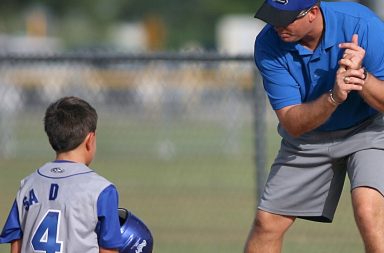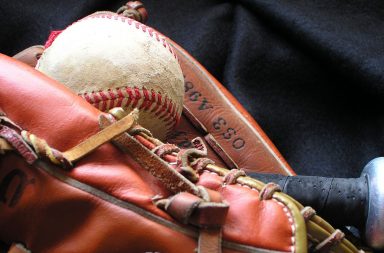This article – How to Play Third Base (the Right Way) – is part of our “How to Play” series aimed at helping youth league coaches properly instruct their players on the fundamentals of each position. The third baseman is usually a quality fielder with quick hands and a powerful arm. Manning the “hot corner” takes a fearless player, as well as a player who can think on his feet.
Requirements for the Third Baseman
Your third baseman must be quick on his feet, and possess excellent reflexes. While he can of course benefit from raw speed, it is not an essential requiremnt for the position. Third base requires a very solid glove – most batters are right handed, and many of them love to pull the baseball. This means that third base gets many hits, and the fielder’s positon places him very close to the batter, leaving less reaction time than most other positions enjoy. The third baseman mus have a strong arm if he is to have any chance of throwing out a runner at first base, so he will frequently possess one of the strongest arms on the team.
Basic Responsibilities
On any contact, the first step should be toward the ball. The player’s momentum will carry him either to the ball, or toward his base.
The exreme left side of the infield is the third baseman’s responsibility domain – anything hit between the shortstop and the left foul line is his responsibility. If he can get to the ball, he should do so. He should be prepared to cover third base if there is any possibility of a play there.
If the ball is hit between second base and the right foul line, the player should always cover third base, in the event of a throw there. He should be aware of what is going on with the shortstop; if a throw is made to second base fromt he right side fo teh outfield, he should back up the play.
Advanced Reponsibilities
With a runner on first and less than two outs, the top priority should always be to attempt a double play. If possible, make a clean throw to the second baseman in an effort to “turn two.” However, the player should always bear in mind that the first responsibility is a sure out – make the throw to first if he does not think he has a chance to get the runner at second.
If there is a force play at third (runners on first and second), the first option is usually to step on thrid base to begin a double play – either to second or first, depending on the judgement of where the best chance for an out is. Preference is always given to the lead runner – that is, if it is possible to get the lead runner out (at third or at second), then do so before geting the runner at first.
With the base loaded and two outs, the third baseman may pursue whatever out is easiest to get – this may be stepping on his own base, or making a throw to any base. With less than two outs, the call may be for a double play, unless the coach has decided that runs cannot be sacrificed (tie game late). In this case, the only priority is to attempt to force the runner at the plate.
In the event of a bunt, the third baseman will be charging the ball, leaving third base vacant. Usually, the only play here is to throw the runner out at first unless you are dealing with very slow runners at other bases.
Third base requires a smart, heads-up player with great hands, great reflexes, and a strong arm. Even more, thrid base requires a coach who understand the variety of requirements, and can convery them to his players.


